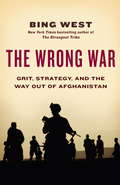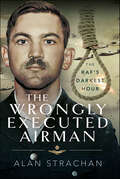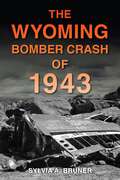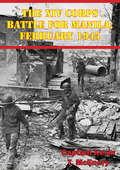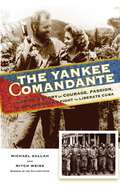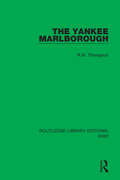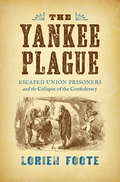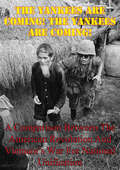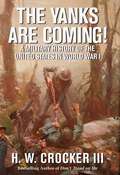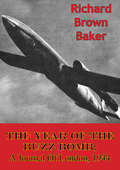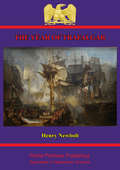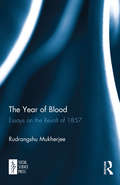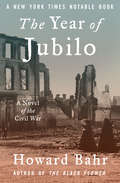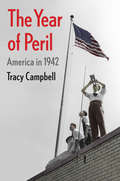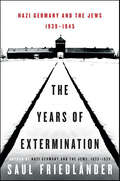- Table View
- List View
The Wrong Goodbye
by Toshihiko YahagiA classic slice of Japanese hard-boiled noir paying homage to the master of the genre: Raymond ChandlerThe Wrong Goodbye pits homicide detective Eiji Futamura against a shady Chinese business empire and U.S. military intelligence in the docklands of recession Japan. After the frozen corpse of immigrant barman Tran Binh Long washes up in midsummer near Yokosuka U.S. Navy Base, Futamura meets a strange customer from Tran's bar. Vietnam vet pilot Billy Lou Bonney talks Futamura into hauling three suitcases of "goods" to Yokota US Air Base late at night and flies off leaving a dead woman behind. Thereby implicated in a murder suspect's escape and relieved from active duty, Futamura takes on hack work for the beautiful concert violinist Aileen Hsu, a "boat people" orphan whose Japanese adoption mother has mysteriously gone missing. And now a phone call from a bestselling yakuza author, a one-time black marketeer in Saigon, hints at inside information on "former Vietcong mole" Tran and his "old sidekick" Billy Lou, both of whom crossed a triad tycoon who is buying up huge tracts of Mekong Delta marshland for a massive development scheme. As the loose strands flashback to Vietnam, the string of official lies and mysterious allegiances build into a dark picture of the U.S.-Japan postwar alliance. Translated from the Japanese by Alfred Birnbaum
The Wrong Goodbye
by Toshihiko YahagiA classic slice of Japanese hard-boiled noir paying homage to the master of the genre: Raymond ChandlerThe Wrong Goodbye pits homicide detective Eiji Futamura against a shady Chinese business empire and U.S. military intelligence in the docklands of recession Japan. After the frozen corpse of immigrant barman Tran Binh Long washes up in midsummer near Yokosuka U.S. Navy Base, Futamura meets a strange customer from Tran's bar. Vietnam vet pilot Billy Lou Bonney talks Futamura into hauling three suitcases of "goods" to Yokota US Air Base late at night and flies off leaving a dead woman behind. Thereby implicated in a murder suspect's escape and relieved from active duty, Futamura takes on hack work for the beautiful concert violinist Aileen Hsu, a "boat people" orphan whose Japanese adoption mother has mysteriously gone missing. And now a phone call from a bestselling yakuza author, a one-time black marketeer in Saigon, hints at inside information on "former Vietcong mole" Tran and his "old sidekick" Billy Lou, both of whom crossed a triad tycoon who is buying up huge tracts of Mekong Delta marshland for a massive development scheme. As the loose strands flashback to Vietnam, the string of official lies and mysterious allegiances build into a dark picture of the U.S.-Japan postwar alliance. Translated from the Japanese by Alfred Birnbaum(P)2021 Quercus Editions Limited
The Wrong Man: The Shooting of Steven Waldorf and the Hunt for David Martin
by Dick KirbyDavid Ralph Martin was a cross-dressing criminal who carried out a string of sophisticated offences in the 1970s and ’80s. A prolific burglar, car thief, fraudster and gunman, he possessed a deep loathing of anyone in authority. In addition, he was a master of disguise and a veritable Houdini when it came to escaping from prison. After shooting a policeman during a botched burglary, he escaped from court on Christmas Eve, 1982. When police believed him to be in a yellow Mini in the Earls Court area with his girlfriend, they opened fire, only to discover they had shot an entirely innocent man – a 26-year-old film editor named Steven Waldorf. The investigation became a cause célèbre at the time, and was subsequently taken over by Scotland Yard’s Flying Squad, of which the author was a member. One of the biggest manhunts in the history of the Metropolitan Police ensued, before Martin was finally arrested after dramatically fleeing down the tracks between two Underground stations. Author Dick Kirby reveals for the first time the inside story of the hunt for ‘the most dangerous man in London’, whose eventual arrest brought to an end one of the most contentious investigations in Met history.
The Wrong Stuff (Destroyer #125)
by Warren Murphy Richard SapirIt's a blast to the past for CURE when an old foe finds a new home at NASA. KILL, CRUSH DESTROY... A mechanical killer space spider goes on the rampage in Florida. This, however, is no simple angry arachnid robbing armored cars and supermarkets. It's the adopted new brainchild of the reality-challenged head of NASA and his elite cadre of Space Cadets. But not even Captain Kirk is aware of the nightmare that's been unleashed in the name of interplanetary exploration. An old enemy is back in action and, with a click and a whir, can morph from titanium spider into his ugly old android self. And with NASA and America's favorite horror writer in his steel-plated back pocket, he's got a leg-or eight-up on his true mission: destroy the Destroyer. This time, failure is not an option.
The Wrong War: Grit, Strategy, and the Way out of Afghanistan
by Bing WestAmerica cannot afford to lose the war in Afghanistan, and yet Americans cannot win it. In this definitive account of the conflict, acclaimed war correspondent and bestselling author Bing West provides a practical way out. Drawing on his expertise as both a combat-hardened Marine and a former assistant secretary of defense, West has written a tour de force narrative that shows the consequences when strategic theory meets tactical reality. Having embedded with dozens of frontline units over the past two years, he takes the reader on a battlefield journey from the mountains in the north to the opium fields in the south. West--dubbed "the grunt's Homer"--shows why the Taliban fear the ferocity of our soldiers. Each chapter, rich with vivid characters and gritty combat, illustrates a key component of dogged campaigns that go on for years. These never-ending battles show why idealistic theories about counterinsurgency have bogged us down for a decade. The official rhetoric denies reality. Instead of turning the population against the Taliban, our lavish aid has created a culture of entitlement and selfishness. Our senior commanders are risk-averse, while our troops know the enemy respects only the brave. A fighter who understands strategy, West builds the case for changing course. As long as we do most of the fighting, the Afghans will hold back. Yet the Afghan military will crumble without our combat troops. His conclusion is sure to provoke debate: remove most of the troops from Afghanistan, stop spending billions on the dream of a modern democracy, transition to a tough adviser corps, and insist the Afghans fight their own battles. Amid debate about this maddening war, Bing West's book is a page-turner about brave men and cunning enemies that examines our realistic choices as a nation.From the Hardcover edition.
The Wrongly Executed Airman: The RAF's Darkest Hour
by Alan StrachanUtilizing forensic evidence that was ignored by the police, and documents that have never before been released to the public, Alan Strachan has produced the horrific account of a man who was wrongfully executed for rape and murder -- even though it is quite possible that there was neither a rape nor a murder. Both were capital crimes in Canada in 1942 and the accused was British -- a 21-year-old Royal Air Force sergeant whose wife and one-year-old daughter remained in Peterborough when he was sent to New Brunswick to help train Canadians for the war effort. As soon as the trial ended, records were sealed, and anyone interested in documenting the proceedings was told that the transcript would not become available until 2042. But Strachan pursued the matter in 2015 and became the first in more than fifty years to be given full access to that transcript. He then acquired an original copy of the preliminary-hearing transcript, believed to be the only one in existence. Because freedom-of-information laws have been revised since 1942, he was also able to access the original Royal Canadian Mounted Police internal correspondence as well as the diplomatic communications between Canadian and English bureaucrats. Those letters and telegrams document the dereliction of duty by those in power: a Canadian justice minister who went on to become the nation’s prime minister; an ambassador who became governor-general; a member of the British royal family; and, of course, high-ranking RCMP officers. The only truly innocent person in this saga is the one who was executed.
The Wyoming Bomber Crash of 1943 (Disaster)
by Sylvia A. BrunerBomber Mountain's Namesake Tragedy June 1943 saw forty-one heavy bombers lost within the continental United States, including a B-17 that went missing over Wyoming late during the night of June 28. That aircraft had ten young men on board destined for World War II. They had been ordered overseas to participate in the intense and constant bombing raids being conducted in Europe, but they never made it out of America. Two years later, area cowboys discovered the wreckage strewn across an otherwise picturesque landscape. U.S. Air Corps Captain Kenneth G. Hamm noted in his personal diary, “The plane was so completely demolished that we were almost on top of it before we saw it.” Author Sylvia A. Bruner shares the stories of the men who lost their lives deep in the Bighorn Mountains and recounts the events of the crash, search and U.S. Air Corps accident investigation.
The XIV Corps Battle for Manila; February 1945
by Captain Kevin T. McEneryThis study is a historical analysis of the February 1945 battle to liberate Manila. It focuses on the large unit urban combat operations of the U.S. Amy XIV Corps. The XIV Corps attack was part of the larger Allied campaign to liberate Luzon in the Philippines. Manila was an important political and military objective. This month long battle was the only time in the Second World War that U.S. forces fought the Japanese inside a major city. It represented a dramatic departure from the earlier island campaigns of the Pacific Theater.The study evaluates the relationship between the strategic and operational importance of modern major cities and U.S. tactical doctrine for seizing a defended city. The analysis includes U.S. Army World War II large unit doctrine for offensive urban combat, the circumstances that determined the city of Manila would become a battlefield, and the adaptation of doctrine by XIV Corps in Manila. From this historical analysis, we can determine planning and operational considerations for likely corps and division level urban combat today.
The Yankee Comandante: The Untold Story of Courage, Passion, and One American's Fight to Liberate Cuba
by Michael Sallah Mitch WeissWilliam Morgan, a tough-talking ex-paratrooper, stunned family and friends when in 1957 he left Ohio to join freedom fighters in the mountains of Cuba. He led one band of guerrillas, and Che Guevara another, and together they swept through the country, ultimately forcing corrupt dictator Fulgencio Batista from power. In just a year of fighting, the American revolutionary had altered the landscape of the Cold War. But Morgan believed they were fighting to liberate Cuba. Then Fidel Castro canceled elections, seized properties, and imprisoned Morgan&’s fellow freedom fighters. Even Morgan&’s own house mysteriously blew up. But The Comandante is about more than just the revolution. It&’s the story of two people in love, pressured by government agents and mobsters vying to control a nation that soon brought the world to the brink of nuclear destruction. In the mountains, Morgan met Olga Rodriguez, a beautiful, fiery nurse, whom he soon married. Together, amid their firestorm romance, they decided to take a stand and take back the government from Castro and Guevara. The newlyweds began running arms to prepare for a counterrevolution, soon caught in a cloak-and-dagger web among Castro&’s forces; the Mob, which controlled Havana; and the CIA&’s preparations for the Bay of Pigs Invasion. But one of Morgan&’s guards betrayed him to Castro, who threw the counterrevolutionary in prison, placing his wife and their two daughters under house arrest. The couple smuggled secret messages to each other until Olga ultimately escaped by drugging her captors. Before she could free her husband, though, a junta tribunal tried and sentenced him to death by firing squad. Drawing on declassified FBI, CIA, and Army intelligence records as well as Olga&’s diaries, Pulitzer Prize–winning authors Michael Sallah and Mitch Weiss skillfully reveal the inner workings of the Cuban Revolution while detailing the incredible love story of a rebel nurse and an American street hero who left their mark on history.
The Yankee Marlborough (Routledge Library Editions: WW2 #48)
by R.W. ThompsonThis book, first published in 1963, is an early biography of Winston Churchill, examining his personality and character that was woven so closely through the texture of Britain’s story in the first half of the twentieth century. In attempting to discover a complete and complex Churchill, in his character, ambitions and personal experiences, the book seeks to present a clearer insight into the events of Churchill’s life.
The Yankee Plague: Escaped Union Prisoners and the Collapse of the Confederacy (Civil War America)
by Lorien FooteDuring the winter of 1864, more than 3,000 Federal prisoners of war escaped from Confederate prison camps into South Carolina and North Carolina, often with the aid of local slaves. Their flight created, in the words of contemporary observers, a "Yankee plague," heralding a grim end to the Confederate cause. In this fascinating look at Union soldiers' flight for freedom in the last months of the Civil War, Lorien Foote reveals new connections between the collapse of the Confederate prison system, the large-scale escape of Union soldiers, and the full unraveling of the Confederate States of America. By this point in the war, the Confederacy was reeling from prison overpopulation, a crumbling military, violence from internal enemies, and slavery's breakdown. The fugitive Federals moving across the countryside in mass numbers, Foote argues, accelerated the collapse as slaves and deserters decided the presence of these men presented an opportune moment for escalated resistance. Blending rich analysis with an engaging narrative, Foote uses these ragged Union escapees as a lens with which to assess the dying Confederate States, providing a new window into the South's ultimate defeat.
The Yankees are Coming! The Yankees are Coming!: A Comparison Between The American Revolution And Vietnam’s War For National Unification
by Major Jeffrey M. Dunn USMCThis paper compares British involvement in America's struggle for independence in the late eighteenth century with the United States' immersion in North Vietnam's struggle for national unification in the twentieth.Many similarities exist between the American Revolution and the Vietnam War. Five of the most apparent similarities are examined. First, Great Britain and the United States made similar fundamental assumptions, in their respective conflicts, which proved equally flawed. Second, the distances between the combatants in both conflicts were vast. The lines of communication were extremely long. Third, similarities abound between the people involved, both generally and specifically. Fourth, both wars have a single campaign that can be described as the turning point. Though Saratoga and Tet occurred at relatively early stages in the respective conflicts, the outcomes of the wars were arguably decided after those campaigns. Fifth, the southern strategies in both wars are remarkably analogous. Both Great Britain and the United States succeeded in alienating the undecided, and arousing animosity among the common people.1. The United States became the oppressor in Vietnam, and closely emulated its enemy, Great Britain, in the Revolutionary War.2. Many patterns repeat themselves through history and within those patterns are keys to success in the future.3. The United States needs to become more proficient at searching for patterns in history (not just its own). By learning from the mistakes made by itself and others, the U.S. will make fewer mistakes in the future.
The Yanks Are Coming!: A Military History of the United States in World War I
by H. W. Crocker IIIBestselling military historian H. W. Crocker III (The Politically Incorrect Guide to the Civil War, Robert E. Lee on Leadership, etc.) now turns his guns on the epic story of America's involvement in the First World War with his new book The Yanks Are Coming: A Military History of the United States in World War I. <P><P>2014 marks the centenary of the beginning of that war, and in Crocker's sweeping, American-focused account, readers will learn: <P><P>How George S. Patton, Douglas MacArthur, George C. Marshall (of the Marshall Plan), "Wild Bill" Donovan (future founder of the OSS, the World War II precursor to the CIA), Harry S. Truman, and many other American heroes earned their military spurs in "The Great War" <P><P>Why, despite the efforts of the almost absurdly pacifistic administration of Woodrow Wilson, American involvement in the war was inevitable <P><P>How the First World War was "the War that Made the Modern World"-sweeping away most of the crowned heads of Europe, redrawing the map of the Middle East, setting the stage for the rise of communism and fascism <P><P>Why the First World War marked America's transition from a frontier power-some of our World War I generals had actually fought Indians-to a global superpower, with World War I generals like Douglas MacArthur living to see, and help shape, the nuclear age <P><P>"The Young Lions of the War" -- heroes who should not be forgotten, like air ace Eddie Rickenbacker, Sergeant Alvin York (memorably portrayed by Gary Cooper in the Academy Award-winning movie Sergeant York), and all four of Theodore Roosevelt's sons (one of whom was killed)Stirring, and full of brilliantly told stories of men at war, The Yanks Are Coming will be the essential book for readers interested in rediscovering America's role in the First World War on its hundredth anniversary.
The Yanks Are Coming: The United States in the First World War
by Albert MarrinDescribes how American military forces helped the Allies turn the tide of World War I and how the United States mobilized industry, trained soldiers, and promoted the war to the people at home.
The Year Of Decision: 1846
by Bernard DevotoThis book tells many fascinating stories of the U.S. explorers who began the Western march from the Mississippi to the Pacific, from Canada to the annexation of Texas, California, and the Southwest lands from Mexico. It is the penultimate book of a trilogy which includes Across the Wide Missouri, for which DeVoto won both the Pulitzer and Bancroft prizes in 1948, and The Course of Empire, which won the National Book Award for Nonfiction in 1953. DeVoto's narrative covers the expanding Western frontier, the Mormons, the Donner party, Fremont's exploration, the Army of the West, and takes readers into Native American tribal life.
The Year Of The Buzz Bomb; A Journal Of London, 1944: A Journal Of London 1944
by Richard Brown BakerOne humble GI working for the OSS in London recounts his experiences under bombardment by the Nazi wonder-weapon, the V-1 flying rocket."London in April and May of 1944 was a battered, cheered hero. The whole Allied world admired the fortitude of its inhabitants, survivors of the fires and explosions of persistent Luftwaffe attacks."It was to this London that I came as one of the innumerable Americans shipped overseas for the war effort, having crossed the Atlantic on the crowded Queen Mary, nearly fifteen thousand troops aboard, which sped out of submarine range into a Scottish port toward the end of March. We came, a batch of us, by night in a darkened troop-train to London, where we arrived in a gray dawn as one of the last of the "Little Blitz" air attacks was ending."After 1944's balmy, agreeable April the weather worsened. Then by mid-June began the prolonged and terrifying bombardment of London by flying bombs (nicknamed also V-1, buzz bombs, doodle bugs, rocket bombs, and pilotless planes) that were launched from across the English Channel."
The Year Of Trafalgar
by Sir John Henry NewboltA happy idea carried to excellent completion by very competent hands is the best description of The Year of Trafalgar, by Henry Newbolt. It is not likely that this year of splendid memory will find a worthier literary tribute than this delightful volume. Mr. Newbolt's is much more than a familiar story, gracefully retold. He has made an exhaustive study of all the details of the Naval Campaign of 1805, and his narrative is of distinct historical value. As might have been expected, Mr. Newbolt writes with deliberate sobriety and restraint. Great deeds are best told simply, and the last glorious chapter in the life of Nelson needs no literary embellishment. Every danger besetting a task full of difficulty is evaded. He is not laboured, nor pedantic, nor sentimental, but rather tells the great story in a direct and manly way, eminently befitting the subject. His is a book which every boy should read in "Nelson's year," and no Briton of any age will read it unmoved. It was a happy thought to add to the narrative an anthology of Trafalgar poetry. It is a little curious, as Mr. Newbolt points out, how our greatest warlike achievements have received scant treatment from our poets. The "Victory " has been less fortunate than "The Revenge" or "The Temeraire." Strange that it did not rouse the war-bugle of Campbell to an immortal strain. Of all the verses, Mr. Newbolt's own are perhaps the best. Some day, we trust, he will give us a song of Nelson to rank in all future patriotic anthologies with his incomparable "Drake's Drum," "The Fighting Temeraire," and "The Ballad of the Bold Menelaus."--The Bookman 1905.
The Year of Blood: Essays on the Revolt of 1857
by Rudrangshu MukherjeeRudrangshu Mukherjee places the ‘soldier-peasant’ at the forefront of the Revolt. Violence has rarely been described with so much realism and subtlety. The imaginative use of primary source materials adds clarity to accounts such as the massacre in Satichaura Ghat and the trial of Mangal Pandey. The layers of complexity that defined the relationship between the rulers and the subjugated are also exposed.
The Year of Europe: Documents on British Policy Overseas, Series III Volume IV (Whitehall Histories Ser. #Vol. Iii)
by Christopher Baxter Keith Hamilton Patrick Salmon Alastair NobleThis is the latest volume of Documents on British Policy Overseas and the first in the series to be produced in electronic format, covering the principal themes of: the European Union, transatlantic divisions, war in the Middle East and the diplomacy of the energy crisis. Edited and selected by Foreign and Commonwealth Office historians, it consist
The Year of Jubilo: A Novel of the Civil War
by Howard BahrA &“sweeping, cinematic story of rebellion, loyalty, revenge, and reawakened romance&” set in the immediate aftermath of the Civil War (The New York Times Book Review). A New York Times Notable Book The last time Gawain Harper saw Cumberland, Mississippi, he was heading off to fight for the newly formed Confederate States of America—driven not by the cause that motivated so many others, but by love. The father of his beloved, Morgan Rhea, refused to allow her to be courted by a man who would not take up arms to defend the South. So Gawain joined the Mississippi Infantry—and now, three nightmarish years later, he is coming home. But postwar Cumberland is not the place Gawain so fondly remembered. An occupying force of Union soldiers keeps uneasy watch over the townspeople, including an erstwhile slave hunter and an albino gravedigger known as Old Hundred-and-Eleven. Meanwhile, a bloodthirsty former Confederate officer named King Solomon Gault is organizing a secret militia to drive the occupiers out and bring the entire region under his ruthless control. Before Gawain can marry Morgan and build their new life together, he must return to the world of violence and turmoil he has been so desperate to escape. With &“complex, well-crafted, often beautiful prose&” (TheSeattle Times) and &“a cast of characters worthy of a Larry McMurtry novel&” (Newsday), The Year of Jubilo is a stunning achievement from the award-winning author of The Black Flower and The Judas Field.
The Year of Peril: America in 1942
by Tracy CampbellA fascinating chronicle of how the character of American society revealed itself under the duress of World War II The Second World War exists in the American historical imagination as a time of unity and optimism. In 1942, however, after a series of defeats in the Pacific and the struggle to establish a beachhead on the European front, America seemed to be on the brink of defeat and was beginning to splinter from within. Exploring this precarious moment, Tracy Campbell paints a portrait of the deep social, economic, and political fault lines that pitted factions of citizens against each other in the post–Pearl Harbor era, even as the nation mobilized, government‑aided industrial infrastructure blossomed, and parents sent their sons off to war. This captivating look at how American society responded to the greatest stress experienced since the Civil War reveals the various ways, both good and bad, that the trauma of 1942 forced Americans to redefine their relationship with democracy in ways that continue to affect us today.
The Year of the French (The Thomas Flanagan Trilogy)
by Seamus Deane Thomas FlanaganIn 1798, Irish patriots, committed to freeing their country from England, landed with a company of French troops in County Mayo, in westernmost Ireland. They were supposed to be an advance guard, followed by other French ships with the leader of the rebellion, Wolfe Tone. Briefly they triumphed, raising hopes among the impoverished local peasantry and gathering a group of supporters. But before long the insurgency collapsed in the face of a brutal English counterattack.Very few books succeed in registering the sudden terrible impact of historical events; Thomas Flanagan's is one. Subtly conceived, masterfully paced, with a wide and memorable cast of characters, The Year of the French brings to life peasants and landlords, Protestants and Catholics, along with old and abiding questions of secular and religious commitments, empire, occupation, and rebellion. It is quite simply a great historical novel.Named the most distinguished work of fiction in 1979 by the National Book Critics' Circle.
The Year of the Wind: A Novel
by Karina Pacheco MedranoA lyrical novel depicting the devastating effects of political violence in Peru on three women’s livesNina, a Peruvian writer in Spain on the eve of the pandemic, is pulled back into her nation’s fraught history after a fleeting encounter with a woman who is a doppelgänger of Bárbara, a cousin lost to time. The games, the candor, and the secrets of her youth come alive again, but these memories are tinged with disquiet, and what unfolds takes Nina back to a village nestled in the Andes where she must confront the terrors that stalked Peru in the early 1980s. As she travels from Cusco to Apurimac to uncover Bárbara’s fate, Nina begins to weave a new cloth of memory. She learns more about Bárbara’s political radicalization and involvement with the Shining Path, the Maoist terrorist group that instigated a bloody period of political violence in which tens of thousands of mostly indigenous Peruvians disappeared or were killed.In her first novel to be translated into English, Karina Pacheco Medrano explores how war transforms family stories and complicates the distinction between prey and hunter. Part bildungsroman, part detective novel, The Year of the Wind records a significant chapter in Peruvian history rarely considered in the literature of political violence, exploring the anonymous stories marked by horror, loss, bewilderment, and, in some cases, redemption.
The Years Were Good
by Louis B. SeltzerLOUIS BENSON SELTZER was born September 19, 1897, in a single-story cottage back of a fire station on Cleveland’s near West Side—on the other side of the river and the other side of the tracks. The oldest of five children in a household always short of cash, he was hardly in knee britches before he was handling a paper route to help out the kitchen bank. His father was Charles Alden Seltzer, who was to write 49 books, many of which were later made into motion pictures. But when Louis Seltzer was seven years old his father had not yet sold his first story, and when he was thirteen he left school without finishing seventh grade in order to take a job as an office boy and cub reporter on The Leader. A year later he moved over to The Cleveland News, only to come back to The Leader where, in addition to his other duties, he wrote a column under the by-line of “Luee, The Offis Boy.” Once more he shifted to The Cleveland News, and after a short time there he was fired—and told he’d never make a newspaperman.This was early in 1915 and Louis B. Seltzer was not quite eighteen. He was already married to Marion Elizabeth Champlin, and his first child, Chester Ellsworth, was soon to be born. A daughter, Shirley Marion, was born in 1919. Within a year of joining The Press he was made City Editor, only to fire himself from that particular assignment in six months because he didn’t like the desk work. He chose to become a reporter again, specializing in the political beat.In 1921 he again became City Editor of The Press. In 1924 he was named Political Editor. In 1927 he was made Chief Editorial Writer. In March of 1928 he became Associate Editor. And on July 9, in the same year, he was elevated to the post of Editor of The Cleveland Press, a position he has filled ever since. In addition he has been since 1937 Editor-in-Chief of the Scripps-Howard Newspapers of Ohio.
The Years of Extermination: Nazi Germany and the Jews, 1939–1945
by Saul Friedländer"Establishes itself as the standard historical work on Nazi Germany’s mass murder of Europe’s Jews. . . . An account of unparalleled vividness and power that reads like a novel. . . . A masterpiece that will endure." — New York Times Book ReviewThe Years of Extermination, the completion of Saul Friedländer's major historical opus on Nazi Germany and the Jews, explores the convergence of the various aspects of the Holocaust, the most systematic and sustained of modern genocides.The enactment of the German extermination policies that resulted in the murder of six million European Jews depended upon many factors, including the cooperation of local authorities and police departments, and the passivity of the populations, primarily of their political and spiritual elites. Necessary also was the victims' willingness to submit, often with the hope of surviving long enough to escape the German vise.In this unparalleled work—based on a vast array of documents and an overwhelming choir of voices from diaries, letters, and memoirs—the history of the Holocaust has found its definitive representation.




